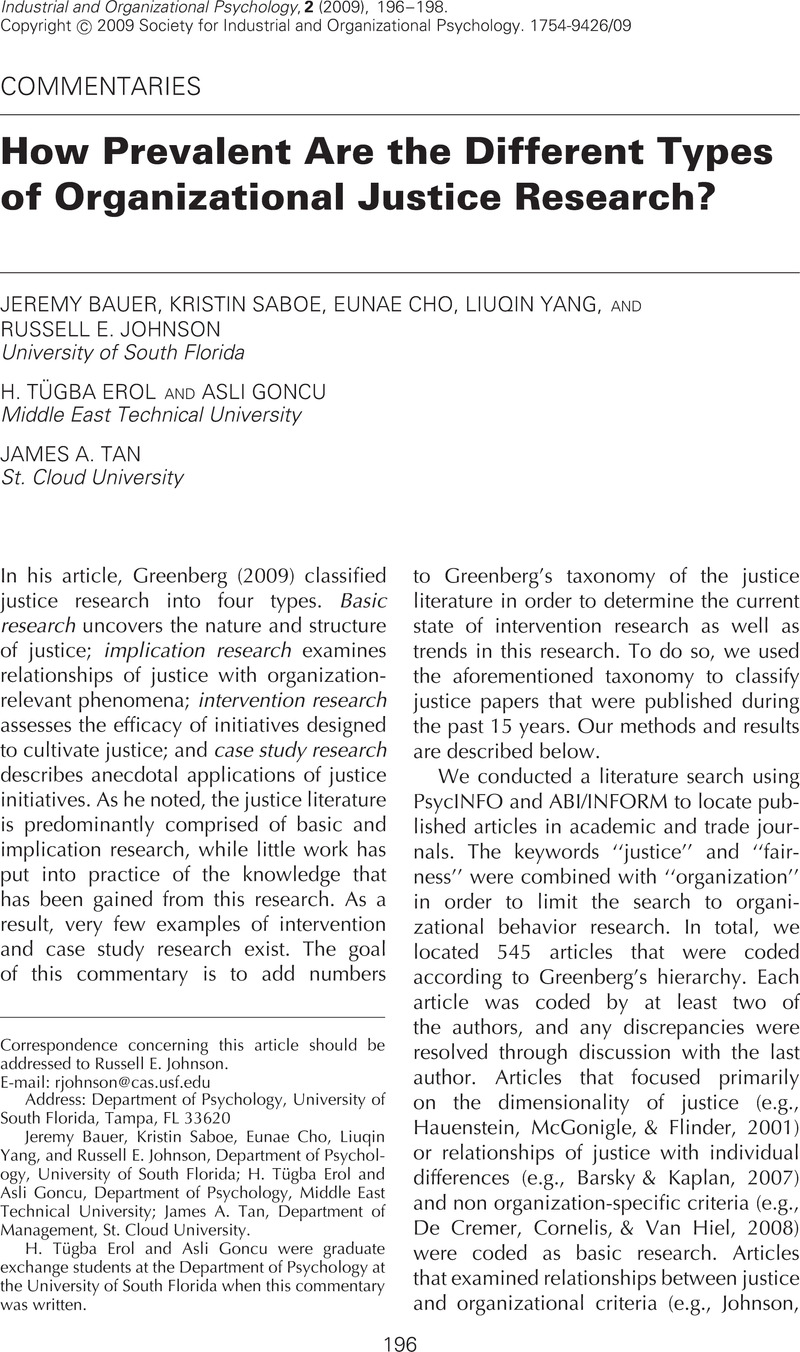Article contents
How Prevalent Are the Different Types of Organizational Justice Research?
Published online by Cambridge University Press: 07 January 2015
Abstract

- Type
- Commentaries
- Information
- Copyright
- Copyright © Society for Industrial and Organizational Psychology 2009
Footnotes
Department of Psychology, University of South Florida
Department of Psychology, Middle East Technical University
Department of Management, St. Cloud University.
Graduate exchange students at the Department of Psychology at the University of South Florida when this commentary was written.
References
- 4
- Cited by


